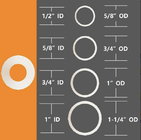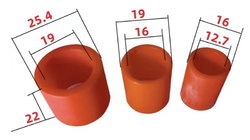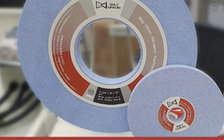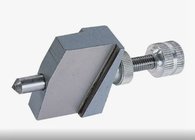Does the side of a new wheel need to be dressed like the face of the wheel
No. That will likely damage the wheel and you have no way to dress the inside face which is eaqally off true
You need to shim the wheel to get it perpendicular. To the shaft.
It will take about 10 minutes.
I described that earlier.
You can shim the wheel to true. Vertical in 10 minutes or so.
The little round adhesive dots work well. Any sticky paper label will work.
Make reference marks on the spindle and the wheel so you keep the wheel in the same position on the spindle.
Run the grinder touch a pencil lightly to the side of the wheel. The short pencil arc is the out of true high point.
Draw a line with the pencil or visually from the center of the pencil arc to the center of the wheel.
Remove the wheel On the outside put a paper dot on the line so that it will be under the edge of the washer.
Put a paper dot on the inside across the center from the outside dot so it is under the edge of the washer.
Remount the wheel aligning the reference marks. The outside dot pushes that side of the wheel toward the motor the inside dot pushes that side of the wheel away from the motor. Turn the grinder on lightly touch the pencil to the side. The line will be a longer arc.
You want this arc to go at least 3/4 the way around.
Add paper dots on top of the first dots until you get a 3/4 line around the wheel.
This will get the wheel in vertical with the shaft. Dress the wheel surface to make it round.





